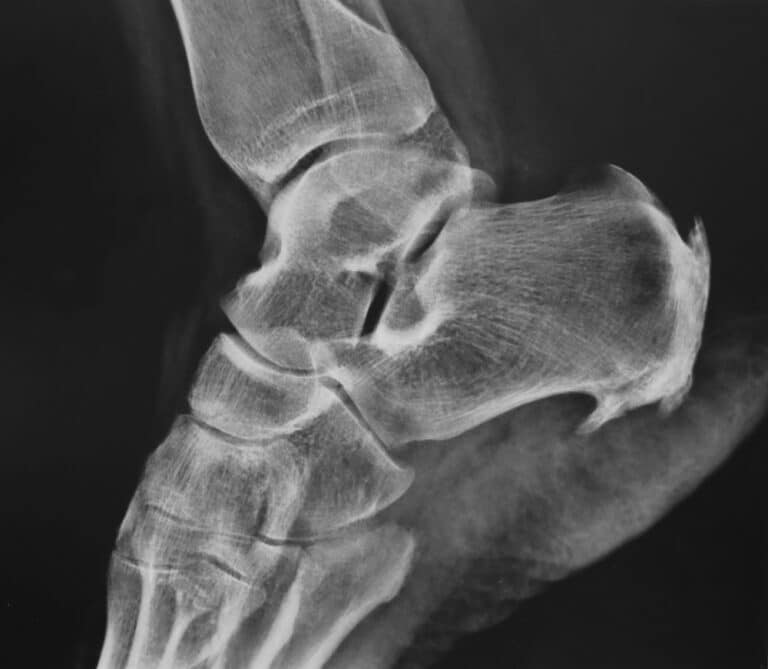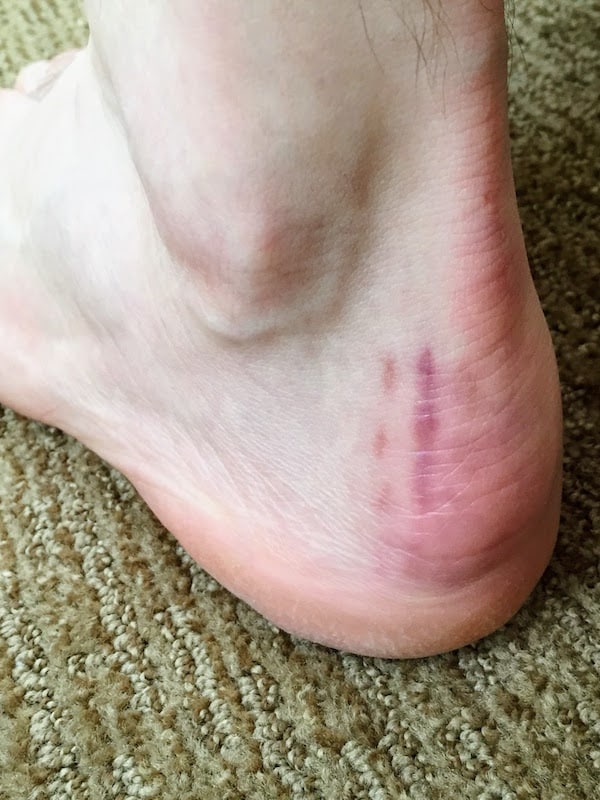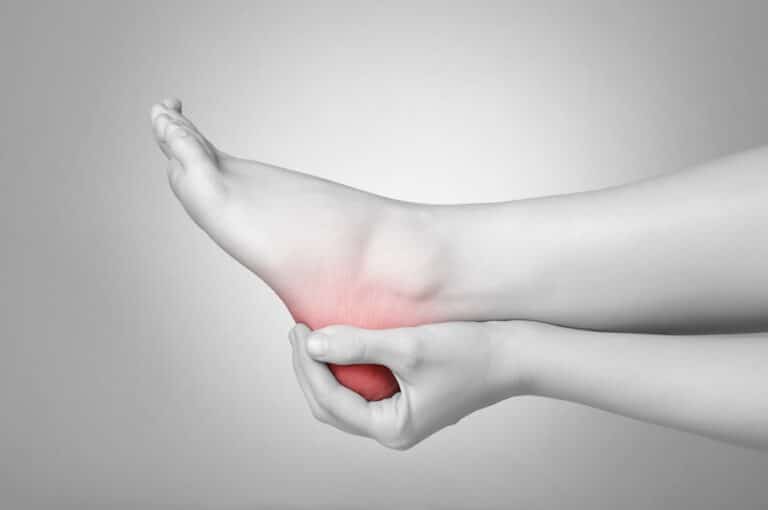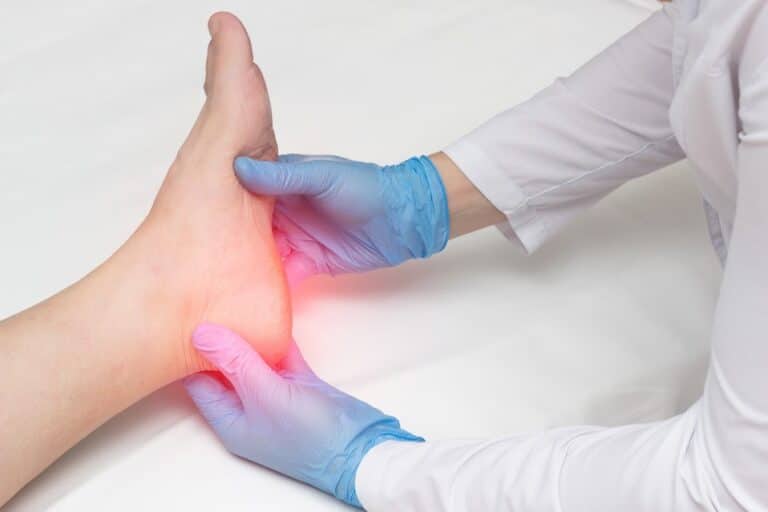Bunions are bony bumps that form at the base of the big toe, causing it to lean inward toward the other toes. While the severity of bunions can vary, there are several common early symptoms to look out for. These include:
- Toe displacement: The big toe gradually starts to shift toward the other toes, causing it to deviate from its normal position.
- Bump formation: A bony bump may develop at the base of the big toe joint on the inner side. This bump can be sensitive to touch and may appear red or swollen.
- Pain or discomfort: You may experience pain or discomfort around the affected joint. This can range from a mild ache to more intense pain, particularly when walking or wearing tight shoes.
- Limited toe movement: As the bunion progresses, the range of motion in the big toe joint may become restricted. This can make it difficult to flex or move the toe normally.
- Corns or calluses: Due to the misalignment of the big toe, friction and pressure can build up on the adjacent toes, leading to the formation of corns or calluses.
- Foot stiffness: Some individuals may notice stiffness in the affected foot or have difficulty finding comfortable footwear that accommodates the bunion.
It’s important to note that bunions are progressive, meaning they tend to worsen over time if left untreated. If you experience any of these symptoms or suspect you may have a bunion, it’s advisable to consult with a healthcare professional, such as a podiatrist or orthopedic specialist, for a proper diagnosis and guidance on appropriate treatment options.
Get a 10% Discount on Minimally Invasive Bunion Surgery
Why Do You Get Bunions?
In order to understand the signs and symptoms of bunions, we must first explain what bunions are exactly. This common foot deformity is a bony protrusion on the inside of your foot at the base of the big toe. Bunions form as a result of an irregular bone alignment – more precisely, the irregular alignment of the first metatarsal bone.
But why does this deformity occur? The reasons usually lie in your footwear choices – wearing narrow, ill-fitting shoes can often be an important factor in bunion development. Your foot structure and biomechanics play a role as well, and some people have a genetic predisposition for this condition. Injuries to the foot and certain inflammatory diseases like rheumatoid arthritis can be risk factors as well.
Who Can Have Them?
Essentially anyone can get bunions, but some groups are more likely to have them than others. This deformity is more common in older people, especially women – thanks to years of wearing high heels. Statistics tell us that up to one in three Americans have bunions, whether on one foot or both feet.
What Are the Early Symptoms of Bunions?
Here are some of the early symptoms of bunions:
- Bump on the base of the big toe: The most prominent sign of a bunion is a bony bump that forms on the joint at the base of the big toe. This bump may be red, swollen, or tender to the touch.
- Toe misalignment: The big toe gradually starts to angle toward the other toes, potentially overlapping or pushing them out of their natural position. This can cause discomfort and affect the overall alignment of the foot.
- Foot pain: As the bunion develops, you may experience pain or soreness around the affected area. The pain can vary in intensity and may be aggravated by pressure from footwear or certain activities.
- Limited toe movement: The range of motion of the big toe may become restricted, making it difficult to move the toe as freely as before.
- Corns and calluses: Due to the friction and pressure caused by the bunion rubbing against footwear, corns or calluses may develop on or between the toes. These are areas of hardened, thickened skin that can be painful.
How Are Bunions Treated?
The treatment of bunions depends on the severity of the condition and the symptoms experienced. In the early stages of bunions, when symptoms are mild, conservative treatment measures are often recommended. Here are some common approaches to bunion treatment:
- Footwear modifications: Wearing comfortable, roomy shoes with a wide toe box can help alleviate pressure on the bunion and reduce discomfort. Avoiding high heels and narrow, pointy shoes can also prevent the worsening of symptoms.
- Padding and taping: Applying moleskin or gel-filled pads over the bunion can help cushion and protect the area, reducing friction and pain. Taping the foot can also help in providing support and relieving pressure on the bunion.
- Orthotic devices: Custom orthotic inserts or over-the-counter arch supports can be used to stabilize the foot and improve its alignment. These devices may help redistribute pressure and reduce the progression of the bunion.
- Medications: Nonsteroidal anti-inflammatory drugs (NSAIDs), such as ibuprofen, can help reduce pain and inflammation associated with bunions. However, these medications only provide temporary relief and do not address the underlying cause.
- Bunion splints or cushions: Various splints or cushions are available that can help realign the toe and relieve pressure on the bunion. These devices are typically worn at night or inside the shoes during the day.
- Physical therapy: Specific exercises and stretches can be recommended to improve the strength and flexibility of the foot and toe muscles, which can help alleviate symptoms and slow down the progression of the bunion.
- Shoe inserts: Certain shoe inserts or arch supports can help redistribute weight and relieve pressure on the bunion, improving foot mechanics and reducing discomfort.
In cases where conservative measures fail to provide relief or when the bunion becomes severe and causes significant pain or limits mobility, surgical intervention may be considered. Bunion surgery aims to correct the underlying deformity, realign the toe joint, and remove the bony prominence. The type of surgery will depend on the specific circumstances and the individual’s needs.
When Should You See a Doctor?
Sometimes, bunions aren’t symptomatic – you may have the bump but no unpleasant symptoms to go with it. If that’s the case, you may choose to treat the condition, but you can also choose to ignore it – since it’s just a cosmetic issue. Still, most patients have painful bunions that interfere with their everyday activities and cause discomfort. If that’s your case, you should reach out to your foot doctor as soon as possible. They will be able to help you with conservative treatment, and if that fails, they will recommend surgery to correct your bunion.
How to Prevent Bunions?
There isn’t much you can do to prevent the bunion from developing if it has already started to form. The only thing you have control over is the kind of shoes you wear, which can drastically affect your bunions. Try to stick to comfortable shoes with wide toe boxes and soft soles. You should avoid pointed shoes that will put pressure on the front of your foot – this means avoiding high heels as well.
Consult Your Doctor in Miami About Getting Rid of Bunions
If you’re struggling with bunions, it’s important to reach out to an experienced doctor who can help you and provide you with proper treatment. Every doctor at our Luxe Foot Surgery clinic can do just that – our experts know everything there is to know about bunions and the treatment options for this condition. Contact us to schedule your consultation – the first one is free. Our team is here to help you heal and get back to pain-free life once again!
FAQ
At What Age Do Bunions Develop?
Bunions can develop at any age, but older people are more likely to get this common foot deformity. Bunions often develop in older women because wearing high heels for many years is one of the important risk factors for this condition.
What Does a Mild Bunion Feel Like?
A mild bunion can be asymptomatic, but it may also cause pain and discomfort. The skin in the area of the bunion can be red and inflamed, and the patient can also experience numbness when walking or standing.
Why Do I Suddenly Have a Bunion?
Bunions can develop for many reasons – some people have a genetic predisposition to them, and others have simply worn uncomfortable, narrow shoes for too many years, and the bunion has formed as a result of that.
How Do You Treat Early Bunion Symptoms?
Early symptoms of a bunion should be treated with the help of your doctor. They will recommend bunion pads, medical tape, or orthotics. Ice and pain medication can help as well, and some patients will benefit from physical therapy or steroid injections.
References
- Cleveland Clinic. Bunions (Hallux Valgus) [Internet]. Cleveland Clinic. [Accessed on April 21, 2023]. Available from: https://my.clevelandclinic.org/health/diseases/14386-bunions-hallux-valgus
- Global Podiatry. Warning Signs of Bunions and Best Treatment Options [Internet]. Global Podiatry. [Accessed on April 21, 2023]. Available from: https://globalpodiatry.com/warning-signs-of-bunions-and-best-treatment-options/




